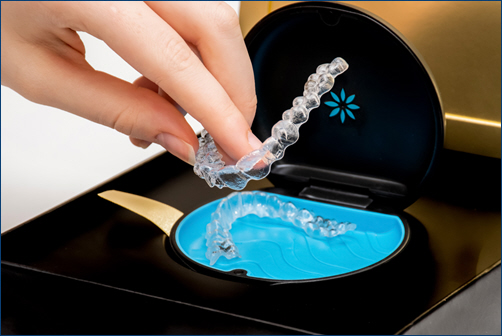Comparing Invisalign and Traditional Braces: Pros and Cons for a Straight Smile
Achieving a straight smile is a goal for many people, and advancements in orthodontics have provided various options to achieve it. Invisalign and traditional braces are two popular methods for correcting misaligned teeth, each with its own advantages and disadvantages. Understanding the pros and cons of both options can help you make an informed decision about which is best for your orthodontic needs.
 Pros of Invisalign
Pros of Invisalign
-
- Aesthetic Appeal: One of the most significant advantages of Invisalign is its discreet appearance. The clear aligners are virtually invisible, making them an attractive option for adults and teenagers who prefer a more subtle orthodontic treatment. This aesthetic benefit allows wearers to maintain confidence in their appearance during treatment.
- Comfort and Convenience: Invisalign aligners are made of smooth plastic, reducing the likelihood of irritation to the cheeks and gums that can occur with metal braces. The aligners are also removable, allowing for easier eating and cleaning. This convenience means there are no dietary restrictions, and maintaining oral hygiene is simpler, as you can brush and floss normally.
- Predictable Results: Invisalign treatment uses advanced 3D imaging technology to map out the entire treatment process. Patients can see a virtual representation of their expected results, providing a clear understanding of the treatment duration and outcome.
Cons of Invisalign
-
- Compliance Required: For Invisalign to be effective, patients must wear their aligners for 20 to 22 hours a day. Failure to comply can extend the treatment time and affect results. This level of discipline may not suit everyone, especially younger patients who might forget to wear their aligners consistently.
- Not Suitable for Complex Cases: Invisalign is most effective for mild to moderate orthodontic issues. For more complex cases, such as severe overcrowding or significant bite problems, traditional braces may be a more suitable option.
Pros of Traditional Braces
-
- Effective for All Cases: Traditional braces are highly effective for treating a wide range of orthodontic issues, including complex cases that involve significant misalignment, overcrowding, and bite problems. The fixed nature of braces provides consistent pressure on the teeth, ensuring effective movement and alignment.
- No Compliance Issues: Unlike Invisalign, traditional braces are fixed to the teeth, so patients do not need to worry about wearing or losing them. This is beneficial for younger patients who may struggle with the responsibility of removable aligners.
Cons of Traditional Braces
-
- Aesthetic Concerns: The most noticeable disadvantage of traditional braces is their visibility. The metal brackets and wires are conspicuous, which may lead to self-consciousness, particularly among adults and teenagers.
- Discomfort and Dietary Restrictions: Braces can cause discomfort, especially after adjustments, and may irritate the cheeks and gums. Patients with braces must also avoid certain foods that can damage the brackets or wires, such as sticky, hard, or chewy items.
Both Invisalign and traditional braces offer effective solutions for straightening teeth, but the right choice depends on individual needs and preferences. Invisalign provides a discreet and comfortable option for those with mild to moderate orthodontic issues, while traditional braces are ideal for more complex cases and do not require patient compliance. Consulting with us at Sauve Family Dentistry can help determine the best treatment plan for achieving a straight and healthy smile.













